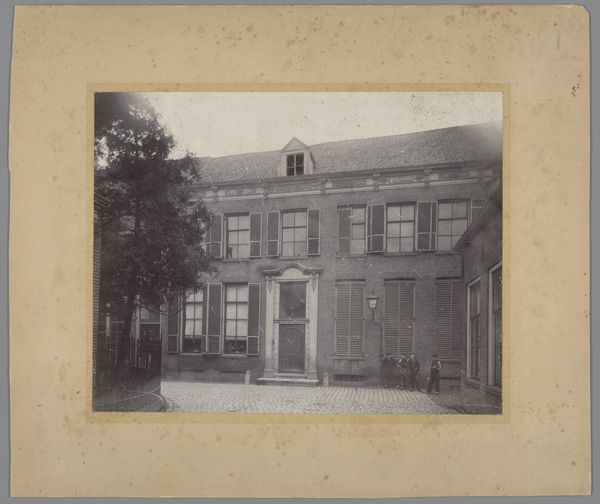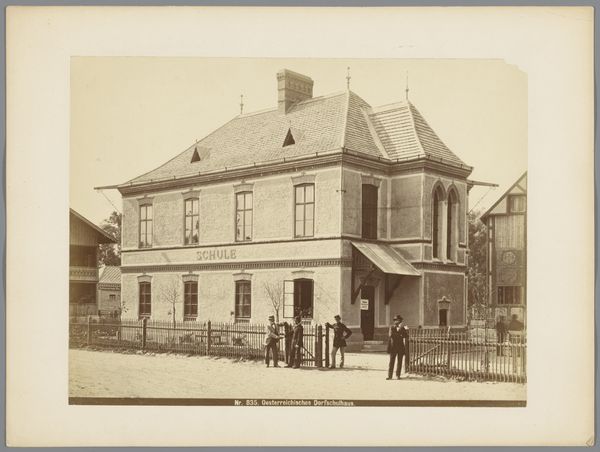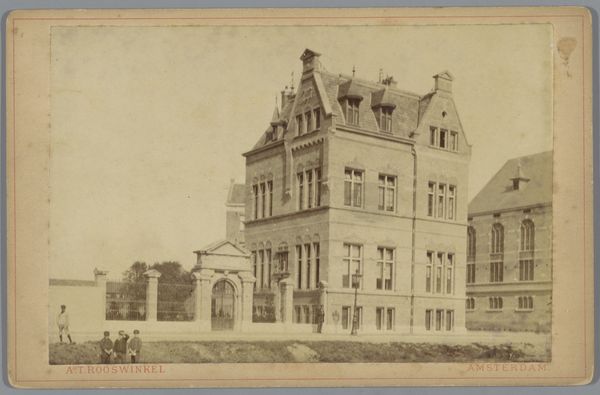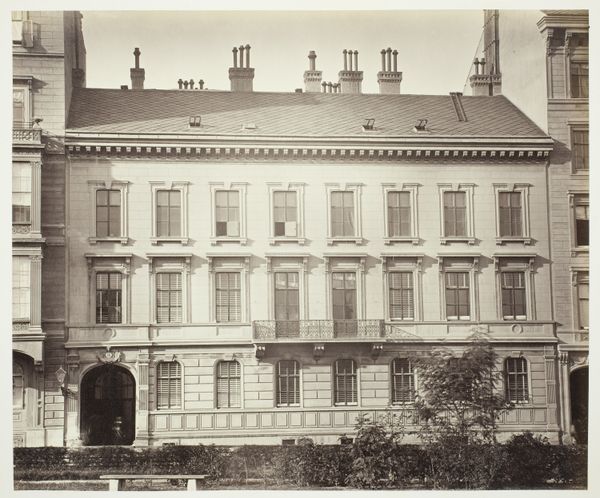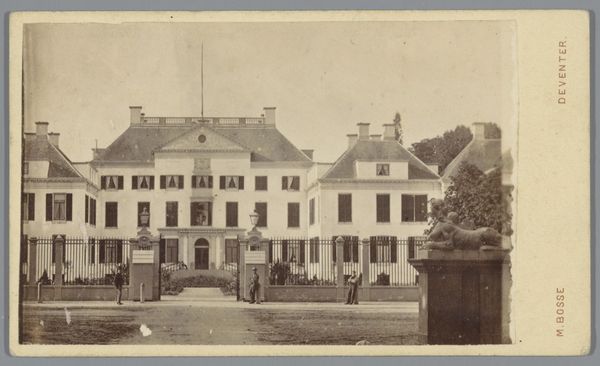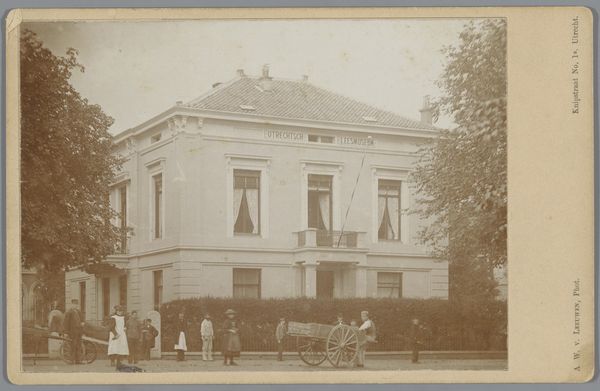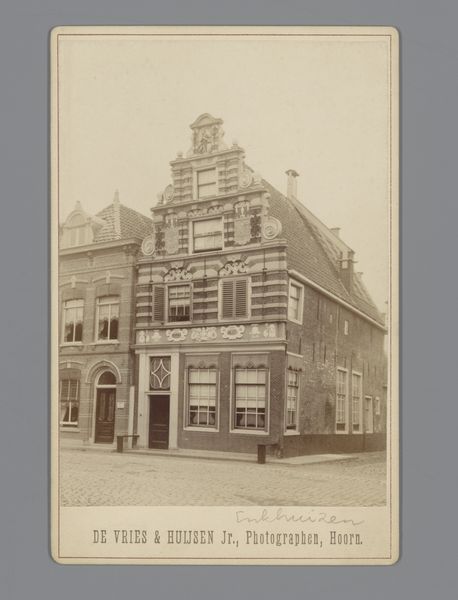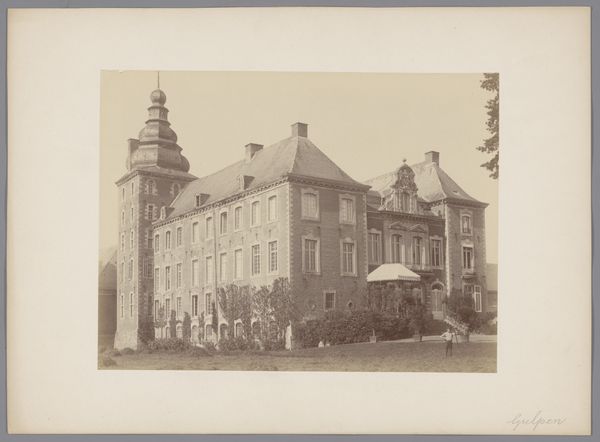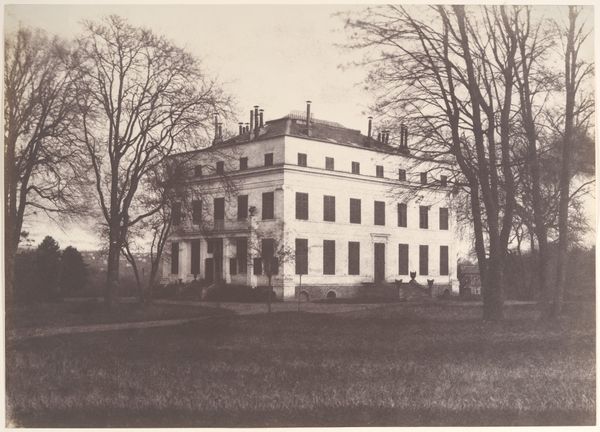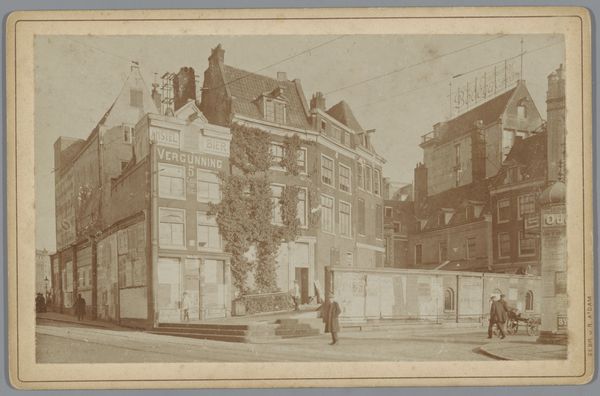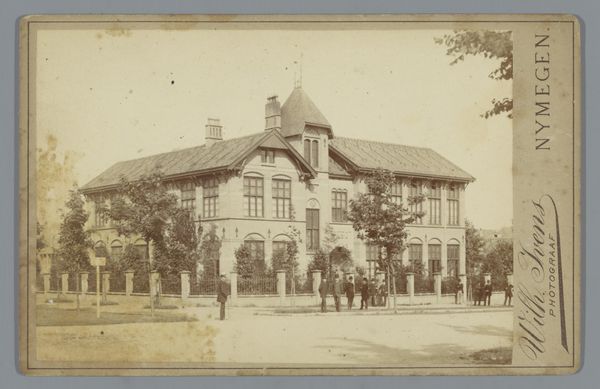
Gebouw van de Maatschappij tot Nut van 't Algemeen in de Stationsstraat te Wageningen 1894 - 1895
0:00
0:00
print, photography, architecture
#
historical design
#
dutch-golden-age
# print
#
photography
#
cityscape
#
architecture
Dimensions: height 107 mm, width 167 mm
Copyright: Rijks Museum: Open Domain
Editor: So this is "Gebouw van de Maatschappij tot Nut van 't Algemeen in de Stationsstraat te Wageningen" taken between 1894 and 1895 by Johan Herman van der Laag. It's a photographic print depicting a building, a cityscape scene in the Dutch Golden Age style. It has this very sepia tone, almost nostalgic feel to it. What strikes you when you look at this image? Curator: The image speaks volumes about social structures and progressivist ideals of the time. The "Maatschappij tot Nut van 't Algemeen"—the Society for Public Welfare—was a key player in shaping Dutch society. This building represents their physical presence but more profoundly their ideological influence. What kind of activities did the Society support, and how were those endeavors seen during that period? Editor: From what I recall, the Society was devoted to educational and social reform... a vehicle for spreading Enlightenment ideas among the working classes. A benevolent project for societal upliftment, or at least, that was how they pitched it? Curator: Exactly. Now consider the photograph itself. It is rendered in sepia tone with architecture dominating the frame. The muted palette emphasizes the somber tones of societal improvement but obscures any challenges. What might be left unsaid or unseen in an image like this? Editor: Perhaps, the voices of those whom the Society sought to uplift? Their experiences, the complexities of integrating Enlightenment ideals into everyday lives… Curator: Precisely! And notice who is included. Are marginalized groups depicted prominently? Analyzing images requires a keen understanding of inclusion and exclusion, as well as a broader picture of history and philosophy of that time. The building symbolizes an ambitious aim—one rooted in intricate power relationships and intersectional layers. Editor: So it is an idealistic representation of power made to look as an ideal image? Curator: You got it. It is something to consider whenever looking at such historical designs, as it reveals social and philosophical power structures through what is not visible in it. Editor: Wow, that shifts my perspective completely!
Comments
No comments
Be the first to comment and join the conversation on the ultimate creative platform.
